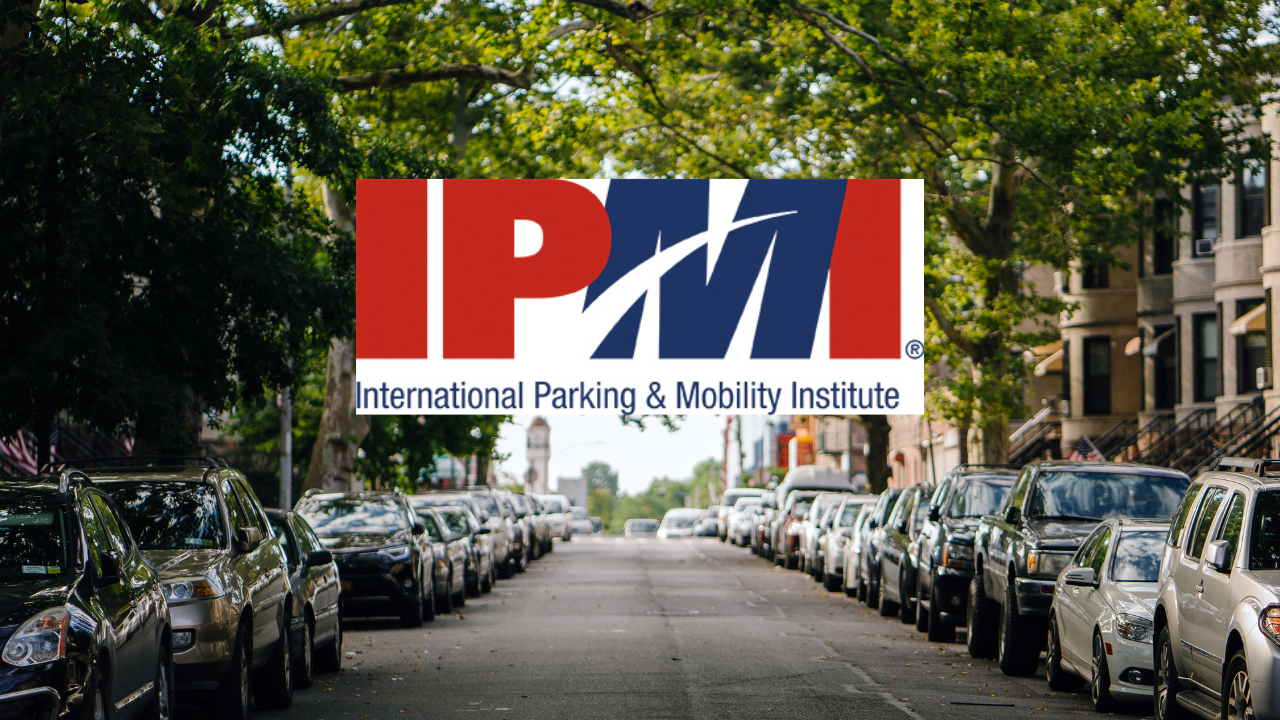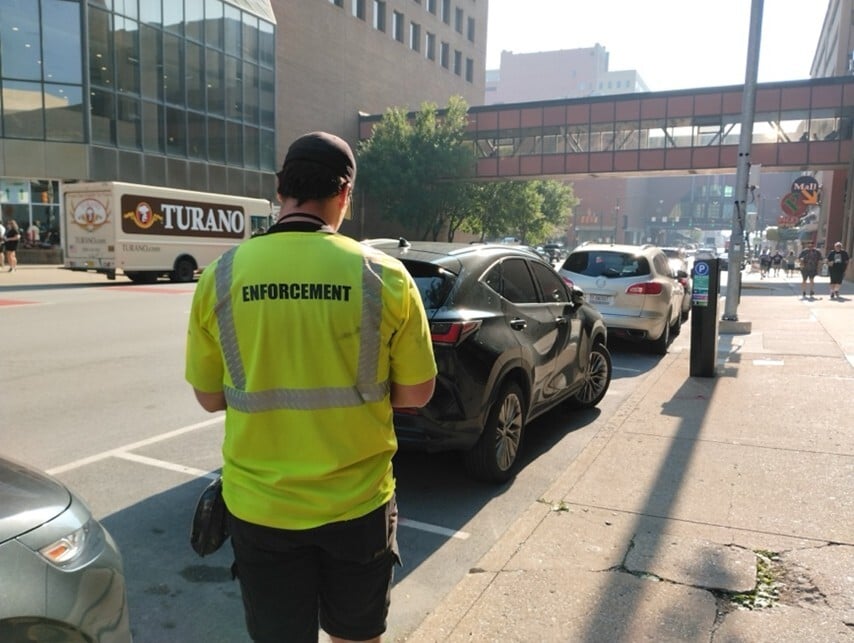4 min read
Plugging Parking Enforcement and Revenue Leaks with Insights
Anna Buchner Jun 19, 2025 9:46:16 PM

Parking enforcement plays a vital role in keeping city streets safe, accessible, and functional. It ensures that vehicles don’t block fire hydrants, bus stops, bike lanes, crosswalks, or loading zones—areas that are essential for emergency response, public transit efficiency, pedestrian safety, and commercial activity. Without enforcement, rules meant to organize curb use and prioritize safety are often ignored, leading to congestion, delays, and unequal access.
In addition to ensuring compliance, promoting equitable access, and improving public safety, parking enforcement can drive critical municipal revenues. These revenues can be reinvested into community services like road maintenance, transit upgrades, or neighborhood improvements—making enforcement not just a regulatory tool, but a driver of broader public benefits.
Framing enforcement as a “money-maker,” however, can trigger public backlash, especially if residents feel they’re being unfairly targeted or that fines are arbitrary. That said, revenue is still an important outcome—not because the goal is to fine people, but because higher, faster, and more certain collections often signal that the system is working.
So, while enforcement isn't about generating revenue, the revenue that is collected reflects the effectiveness of parking management: that people are taking rules seriously, paying fines when due, and the city is effectively managing its public assets for its taxpayers. And when parking enforcement is managed well, it allows for reinvestment in even safer streets, better transit, and fairer access to public space.
Laying the Groundwork: The Water Utility Metaphor
Imagine your city’s parking citation program as a water system. The citation volume — all the tickets your enforcement officers issue — is the water stored in a massive tower or holding tank. That structure represents your revenue reservoir, or citations issued and yet to be resolved, and holds the potential to support critical city services, infrastructure, and mobility goals.
But for that potential to be realized, water must reach the tap — and that tap is revenue. If the pipes are leaky, clogged, or rusted, not much makes it through.
That’s the challenge many cities face. Ineffective enforcement means your reservoir is low. Poor processes, bad data, and broken workflows slow the flow from the system. The result? Lost revenue, poor compliance, and missed opportunities.

Data science, however, allows city managers to inspect the plumbing and clean-out the pipes. Data-driven insights can improve the certainty, or likelihood, of citations, better aligning fine severity with social harm, and increase violation processing speed.
Is Your Money Going Down the Drain?
If revenue reflects the effectiveness of parking enforcement, then leaks represent missed opportunities to achieve compliance and uphold policy goals. Leaks—like undelivered notices, uncollected fines, or unoptimized deployment—signal breakdowns in the system. They can mask the true impact of enforcement efforts, drain resources, and undermine deterrence. Plugging these leaks with insights ensures that the enforcement process is not only fair and strategic but also complete—so that cities see the full return on their efforts to improve safety, equity, and curb access.
In short: when the system works, the money flows.
How do the following challenges align with your operations? Have you enacted similar data-driven strategies to improve the impact of parking enforcement?
Inadequate Citation Issuance (or Underfilled Reservoirs)
You can’t enforce what you don’t see. If parking enforcement officers (PEOs) are not properly deployed or ticket low-priority infractions, your tower isn’t full — or worse, it’s stagnant, filled with low-value citations that rarely get paid.
But there are several opportunities for improving citation issuance.

Slow and Inefficient Collections are like Clogged and Leaking Pipes
Applying insights to improve collections is also essential because issuing citations alone doesn’t drive behavior — resolution does. Without follow-through, enforcement loses credibility and impact. Data helps cities understand why some violations go unpaid: Is the driver unaware? Unreachable? Recalcitrant or a repeat scofflaw? These distinctions matter. Insights allow cities to tailor their noticing, outreach, and escalation strategies — improving fairness, reducing administrative waste, and closing revenue gaps.

Moving Beyond Reservoirs and Pipes: Nuances Impacting Revenue
Fixing leaks and improving flow is essential — but even the best pipework can’t deliver value if the water itself isn’t clean, accessible, or trusted.
In curbside enforcement, collecting fines is the output, but generating revenue depends on more than just volume and flow rate. It depends on how fair, accessible, and adaptable the system is — especially for those it impacts most.
Equity-based Reforms are like a Water Quality Treatment Plant. Raw water isn’t ready to drink. It must be treated to meet community standards. The same is true for enforcement: citations alone aren't enough — the system needs filtration (like fair and accurate issuance practices) and access points (including ready access to fair hearings) to build legitimacy.
Forgiveness Programs Act as Stormwater Diversion and Overflow Control. In water systems, not every drop needs to go through the main pipes — some is diverted, treated differently, or forgiven to avoid overflow. Similarly, not all debt is worth pursuing. Some must be diverted (forgiveness), reabsorbed (write-offs), or handled through relief valves (amnesty) to ensure compliance and reduce wasted resources. Data-driven compliance alternatives act as flood control. These programs keep the system from backing up.
Payment Plans as Flow-Calibrated Plumbing. Not all pipes can handle the same volume. In plumbing, flow restrictors help protect narrow pipes from damage. In parking enforcement, flexible payment terms protect residents with limited means — allowing them to stay in the system without breaking under financial pressure. These programs are custom-fit to household capacity, prevent blowouts (defaults, noncompliance), and keep more people connected to the system
Metering and Usage-based Billing: Aligning Fines with Social Harm. Water systems don’t necessarily charge everyone the same flat rate — they use meters to reflect real use and discourage waste. Citations should work the same way: more harmful behavior costs more, while low-impact mistakes are addressed more gently.
In Los Angeles, data science was used to recommend fine adjustments based on the severity of harm caused — ensuring that dangerous violations (like blocking bus lanes) come with consequences strong enough to prompt action, while still staying fair. That pressure reset should encourage faster payments and improved equity — with a projected $9M+ in added revenue over 5 years.
In Chicago, data helped planners rebalance the mix of citations issued — focusing enforcement on violations that impact safety and congestion (like illegal loading zones or crosswalk blockages). The shift improved both outcomes and equity by reducing over-enforcement in disadvantaged communities.
Calling in the Data Plumber: Fixing Curbside Pressure Where It Counts
Like a good plumber, data science doesn’t just plug leaks — it plumbs the depths of system design to make sure water (or in this case, revenue and compliance) is flowing efficiently, fairly, and purposefully.
Trellint can help you achieve results.
At Trellint, we help cities diagnose and fix revenue leaks — from issuance to collections. With the right data and a few well-placed wrenches, you can stop chasing revenue and start collecting it — as a natural outcome of smarter enforcement.

Want smarter flow paths, less waste, and more pressure where it matters? Let’s talk about how data science can help your enforcement program go from reactive to reliable — from leaks to results.




-1.jpeg)